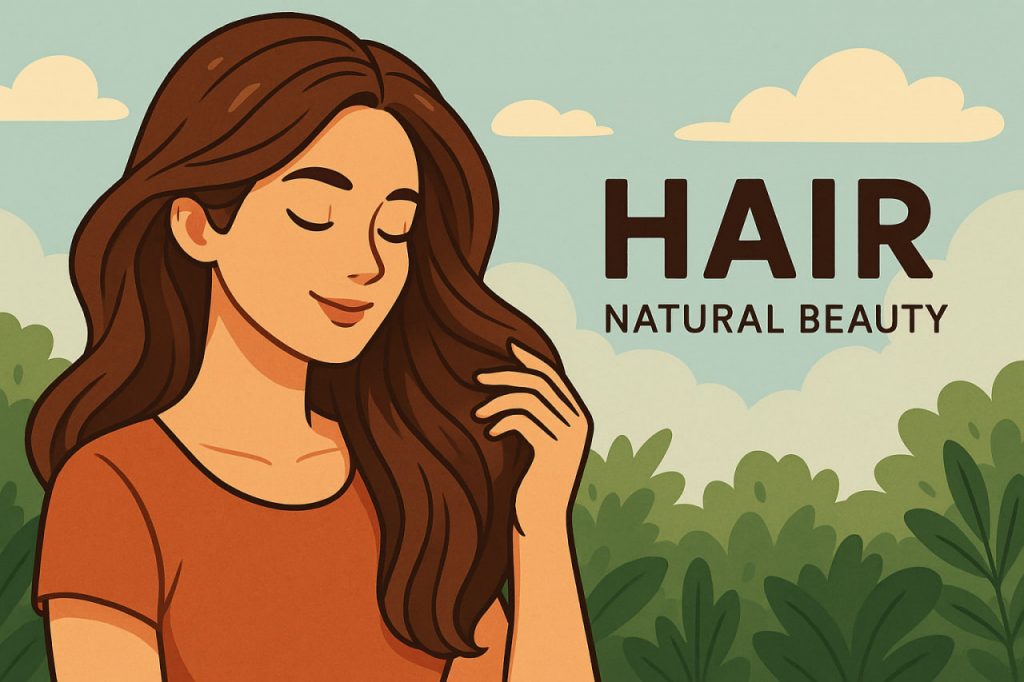Hair is more than just a physical feature—it is a personal symbol of identity, health, and cultural belonging. This remarkable biological material grows from follicles beneath the skin and is made primarily of keratin, a strong and flexible protein. Throughout history, hair has carried deep meaning, representing beauty, status, tradition, and individuality. At the same time, hair serves essential physical functions, offering protection and sensory awareness. Understanding how hair grows and what affects its condition can help people maintain strong and healthy hair throughout their lives.
The Structure and Function of Hair
Hair consists of two main parts: the hair shaft, which is visible above the skin, and the hair follicle, which lies beneath the surface. The follicle anchors the hair in place while also supplying nutrients and enabling growth. Hair acts as a natural insulator, helping regulate body temperature by retaining warmth. On the scalp, it protects the skin from UV radiation and physical friction. Additionally, tiny hairs across the body enhance tactile sensitivity, alerting us to subtle shifts in the environment. Dermatologist Dr. Helena Ruiz notes, “Hair is an extension of the nervous system—it acts like a sensitive antenna, providing signals that help us interact with the world.”
Growth and Life Cycle of Hair
Hair grows in cycles that include three main phases: anagen (growth), catagen (transition), and telogen (rest). Each strand grows for several years during the anagen phase, slowly increasing in length. Once the growth stops, the hair enters the brief catagen phase, followed by the telogen phase where the hair eventually sheds. This natural cycle ensures continuous renewal. Factors such as age, hormones, genetics, and overall health influence the speed of hair growth and the thickness of strands. Hair loss or thinning can occur when the growth cycle is disrupted, highlighting the importance of lifestyle and nutrition in hair health.
Cultural and Personal Significance
Across cultures, hair has profound symbolic meaning. In many societies, it represents strength, spirituality, beauty, or identity. Traditional hairstyles can reflect heritage, religion, or social status. For example, long hair in ancient cultures often signified vitality and wisdom, while certain braiding techniques carry historical and cultural storytelling. Today, hairstyles can express individuality, creativity, and emotion—people cut, color, or style their hair as a form of self-expression. Anthropologist Dr. Naomi Clarke explains, “Hair is deeply personal and deeply social—it is a language people use to communicate identity without words.”
Hair and Health
Healthy hair depends on internal and external care. Diets rich in proteins, vitamins, and minerals—especially iron, zinc, and vitamin B—support strong hair growth. Stress, hormonal imbalance, and lack of sleep can weaken follicles and slow growth. Gentle hair care practices such as avoiding excessive heat, reducing harsh chemical treatments, and protecting hair from the sun also preserve its structure. People experiencing significant hair loss should consult a specialist to identify underlying causes rather than rely on self-treatment.
Emotional Connection and Self-Image
Hair plays a major role in self-esteem and emotional well-being. A good hair day can boost confidence, while unexpected hair loss may cause stress or frustration. Because hair is tied so closely to identity, changes to it can feel deeply personal. Recognizing this emotional connection helps people approach hair care with patience and compassion. Celebrating natural textures, colors, and styles encourages self-acceptance and promotes a positive relationship with appearance.
Interesting Facts
- The average person has 100,000 to 150,000 hairs on their scalp.
- Hair grows approximately 1 centimeter per month, depending on genetics and health.
- A single strand of hair can support up to 100 grams of weight.
- Hair color depends on melanin, the same pigment responsible for skin tone.
- Unlike skin cells, hair fibers themselves are not alive; only the follicle is.
Glossary
- Keratin — A strong protein that forms hair, nails, and the outer layer of skin.
- Follicle — The skin structure that anchors and nourishes each strand of hair.
- Anagen phase — The active growth stage of the hair cycle.
- Melanin — The pigment responsible for natural hair and skin color.
- Dermatologist — A medical doctor specializing in skin and hair conditions.

